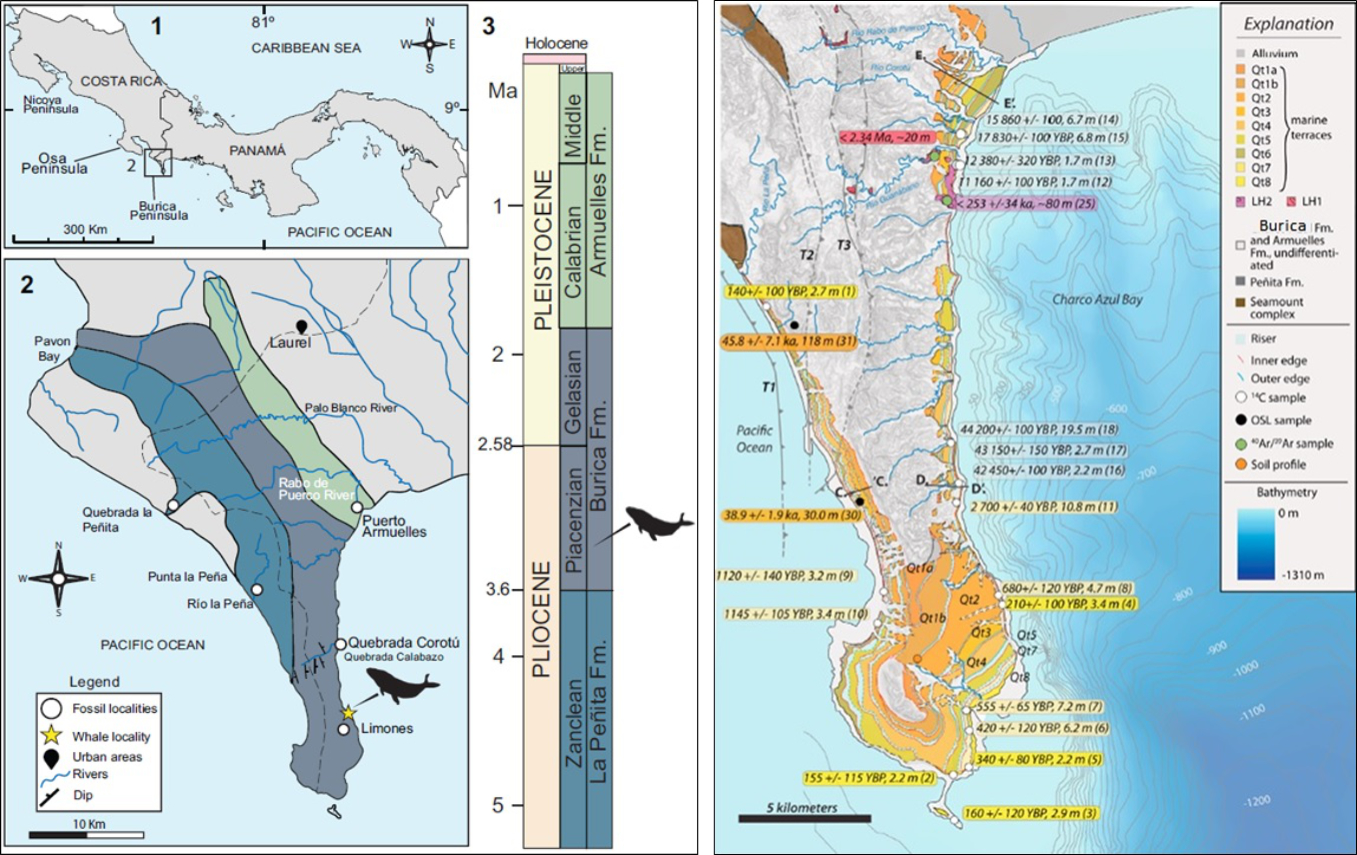La Peñita Fm
Type Locality and Naming
The Stratotype of the “La Peñita” Fm is located along the La Peñita river (8 ° 14.283'N, 82 ° 57.852'W) on the Burica Peninsula (Chiriqui Province). On that same Peninsula, the formation also outcrops along La Peña river (8º 12.794'N, 82º 56.820'W) (Figure 046). The formation can also be found at least at one location in the Osa Peninsula in Costa Rica. Coates et al. (1992)
The La Peñita Fm (basal formation of the Charco Azul Gr) is coarse with locally channelled conglomerates, some of which form a distinctive suite defined as the La Vaca Member by Coates et al. (1992).
Synonym: La Penita Fm; “Peñita Member”; “Peñitas Fm”; Peñitas Fm”; See “Charco Azul Gr” for some additional comments on synonymy. La Vaca Fm (Synonym of La Vaca Member).
Lithology and Thickness
Thickness: 1200m
[Figure 104. Stratigraphic column of the Charco Azul Gr showing the location of the “La Vaca” Member within the “La Peñita” Fm according to Coates et al. (1992). Modified from Morell et al. (2011).]
Relationships and Distribution
Lower contact
Upper contact
Regional extent
GeoJSON
Fossils
[Figure 103. Representative fossils of the La Peñita Fm. Spines and plates of the marine/inter-tidal echinoderm Eucidaris sp., known as the sea urchin "Pencil point" (top left). The carnivorous gastropod Terebra sp. (family Terebridae) (top right). The Anadara bivalve (family Arcidae) (bottom left). The predator gastropod Cancellaria (family Cancellariidae) (bottom right). Scale = 2cm. O’Dea et al. (2007).]
Age
Depositional setting
Additional Information
References: Coryell et al. (1942); Olsson (1942a); Obando (1986); Coates et al. (1992); Kolarsky (1992); Kolarsky et al. (1995a, 1995b); Schlegel (1996); O’Dea et al. (2007); Morell et al. (2011); Cortés et al. (2019);
Relevant documents discussing the La Vaca Member:
- Woodring (1960). A «tentative » undefined formation name of unknown origin for strata, referred to middle Miocene on unspecified grounds, in the Burica Peninsula, Chiriqui Province.
- Keroher et al. (1966); An undefined formation name. Miocene(?).
- Coates et al. (1992) rename it “La Vaca Member” of the La Peñita Fm.
- Morell et al. (2011)

